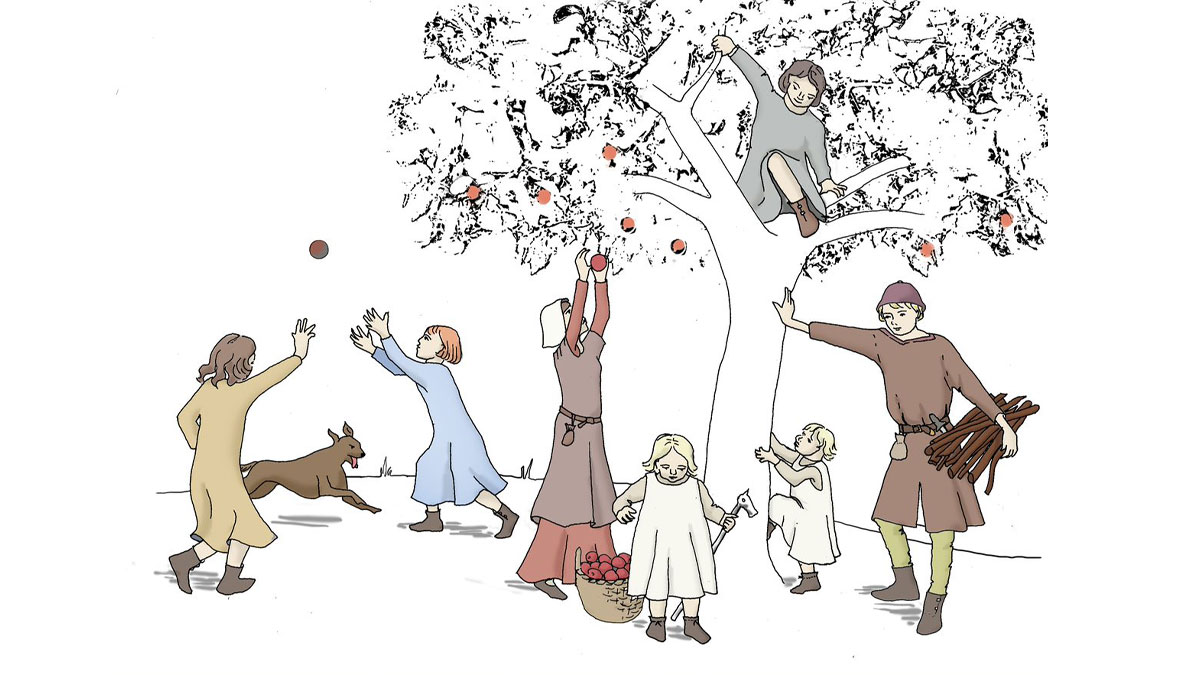What is DHLC?
The Diet, Health and Life Course (DHLC) research cluster is a group of researchers (staff, postdocs and PhD students) interested in using bioarchaeology and mortuary behaviour to explore the interactions between diet, identity and health at different stages of human life history.
Our research bridges the gap between science and humanities for an inclusive approach to the lived experience and wellbeing. Our interests span the Palaeolithic through to the early modern period.
The group is currently focused on three areas of research:
1. The lived experience and ageing
Mary Lewis's pioneering osteological method for assessing puberty in adolescent skeletal remains has allowed for a new perspective on the lived experience of non-adults, focusing on the ways in which diet, gender, environment and health influence the tempo of this important life transition.
Our research in underpinned by Roberta Gilchrist's work into gender and the medieval life course and embraces Rob Hosfield's innovative research on the lived experience of early hominins, examining such issues as infant dependency, the nature of parenting, and children's contributions to foraging.
As part of the Roger Matthews ERC-funded MENTICA project, Sam Walsh is conducting research on how Neolithic practices affected health in the early life course.
Key publications:
- Dempsey K., Gilchrist R., Ashbee J., Sagrott S. and Stones S. 2019. Beyond the martial façade: gender, heritage and medieval castles. International Journal of Heritage Studies, 4: 1-18. Read article
- Gilchrist R. 2020. Sacred Heritage: Monastic Archaeology, Identities, Beliefs. Cambridge University Press. doi:10.1017/9781108678087
- Hosfield R., Hutson J., MacDonald K., Pope M., and Sharon G. 2016. Walking in a winter wonderland? Strategies for early and middle Pleistocene survival in Mid-latitude Europe. Current Anthropology, 57 (5): 653-683. Read article
- Hosfield R. 2020. The Earliest Europeans – A Year in the Life: Seasonal Survival Strategies in the Lower Palaeolithic (PDF). Oxford: Oxbow Books.
- Lewis M. 2016. Work and the adolescent in medieval England AD 900-1550: the osteological evidence. Medieval Archaeology, 60 (1): 138-171. Read article
- Lewis M., Shapland F. and Watts R. 2016. On the threshold of adulthood: A new approach for the use of maturation indicators to assess puberty in adolescents from medieval England. American Journal of Human Biology, 28 (1): 48-56. Read article
2. Diet and mobility
Mobility perspectives encompass Rob Hosfield's research on hominin expansion in north-west Europe (Coping with Climate), Martin Bell's investigations of prehistoric routeways, and research into Neolithisation by Roger and Wendy Matthews.
Working in collaboration with Hella Eckardt, Gundula Müldner's stable isotope work draws together insights on diet, mobility and cultural identity through interdisciplinary research into migrant communities in Roman Britain. Gundula also investigates the supply and movement of plant and animal resources in a range of geo-cultural contexts as a contributor to the 'Exeter: A Time and Place' and 'Human-Environment Relationships in pre-Columbian Amazonia (HERCA)' projects.
Key publications:
- Bell M. 2020. Making one's way in the world: tracking the movements of prehistoric people (PDF). Oxbow Books: Oxford
- Britton K., McManus‐Fry E., Cameron A., Duffy P., Masson‐MacLean E., Czere O., Smith N., Stones J., Winfield A. and Müldner G. 2018. Isotopes and new norms: Investigating the emergence of early modern UK breastfeeding practices at St. Nicholas Kirk, Aberdeen. International Journal of Osteoarchaeology, 28(5): 510-522. Read article
- Eckardt H. ed. 2010. Roman Diasporas: Archaeological approaches to mobility and diversity in the Roman Empire (No. 78). Journal of Roman Archaeology: Oxford.
- Mithen S. 2019. Becoming Neolithic in words, thoughts and deeds. Journal of Social Archaeology, 19(1): 67-91. Read article
3. Practices of death and burial
Reading is making a major and highly distinctive contribution to this domain by harnessing the interpretive power of 'Big Data'.
Mike Fulford's Rural Life in Roman Britain project (ADS online resource) and Duncan Garrow's AHRC-funded project on 'Grave Goods: Objects of death in later Prehistoric Britain' provide a step-change in understanding regional complexity in burial practices in Roman and later Prehistoric Britain, respectively.
John Creighton has developed innovative geomatic techniques to identify cemetery and pyre sites around Roman towns. The agency of the dead in articulating commemorative and communal strategies are explored through Steve Mithen's excavations at Wadi Faynan 16, Jordan, and by Roger Matthews and Wendy Matthews' cemetery excavations at Bestansur, Iraqi Kurdistan (ERC MENTICA).
Key publications:
- Cooper A., Garrow D., Gibson C. and Giles M. 2019. Covering the dead in later prehistoric Britain: elusive objects and powerful technologies of funerary performance. Proceedings of the Prehistoric Society, 85. Read article (PDF)
- Gilchrist R. 2020. Sacred Heritage: Monastic Archaeology, Identities, Beliefs. Cambridge University Press. doi:10.1017/9781108678087
- Gilchrist R. 2015. Transforming medieval beliefs: the significance of bodily resurrection to medieval burial rituals. In: Rasmus Brandt, J., Ingvaldsen, H. and Prusac, M. (eds.) Death and Changing Rituals: function and meaning in ancient funerary practices. Studies in Funerary Archaeology. Oxbow: Oxford
- Matthews R., Matthews W., Richardson A., Raheem K.R., Walsh S., et al. 2019. The early Neolithic of Iraqi Kurdistan: current research at Bestansur, Shahrizor Plain. Paleorient, 45 (2): 13-32. Read article (PDF)
- Smith A., Allen M., Brindle T., Fulford M., Lodwick L. and Rohnbogner A. 2018. New Visions of the Countryside of Roman Britain (vol 3): life and death in the countryside of Roman Britain. Britannia Monographs Series, 31. Society for the Promotion of Roman Studies, London.
